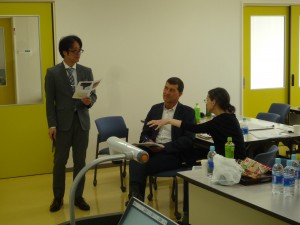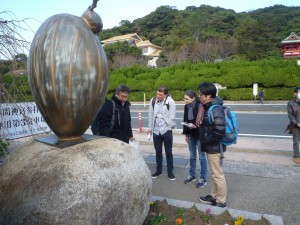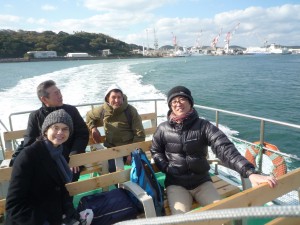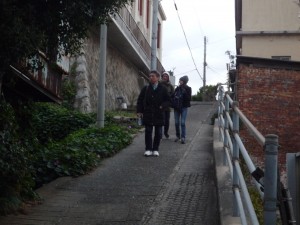- Home
- Four OIST faculty members conducted research and research jointly with Australian university faculty members in Karato and Moji.
Shimonoseki City University
TOPICS
Topics
#Regional surveyFour OIST faculty members conducted research and research jointly with Australian university faculty members in Karato and Moji.
This year's international joint research project (Regional Co-creation Center Project), the four faculty members are conducting research with the aim of creating a "model" of an educational program that assumes no more than one week with the aim of "learning politics, economy, society and international relations in modern and contemporary Japan in the inter-regional region." As part of this, we invited Professor Patrick Jory, who is conducting research on international relations and history in Asia at the University of Queensland in Australia, to conduct joint research through classroom lectures and fieldwork from December 5th (Thu) to 8th (Sun), 2019.
On the 5th day of the first day, we confirmed the purpose and outline of this research at TUFS, and on the 6th, we actively conducted reports and lectures from faculty members on the contents provided to students through actual programs, comments from Dr. Jory on them, and discussions.
On the 7th (Sat) the Karato, Hosoe, and Takezaki areas in Shimonoseki, and on the 8th (Sun), many discussions and opinions were exchanged while conducting fieldwork centered on the Moji area in Kitakyushu. In the Shimonoseki area, the ruins of the former Shiken Dock, the Korean communications envoy, the Akama Jingu Shrine, the Nisshin Peace Memorial Hall, the Li Koshomichi, the Kameyama Hachimangu Shrine, the shopping streets of Karato, the former U.K. Consulate, the former Akita Shokai Building, the Yamagin Historical Archives, the Mazeki Crossing Site, and the Hachiya Canal Station in Hanano Station and Hos in Hananocho, and the Hananocho. On the way, I purchased Monaka at Ume Kotobukiken, a Japanese confectionery shop with a history of more than 100 years, and ate while walking, but Mr. Jory was pleased that it was "delicious". In addition, I went to Mojiko from Karato on a Kanmon ferry and participated in Kanmon Straits cruising (approximately 40 minutes) and other activities. In the Moji area, we surveyed the Kanmon Straits Museum, the former Dalian route shed, the former Osaka Shosen Building, Mojiko Station, and the Monji side of the Kanmon Humanitarian Tunnel.
In this joint research, thanks to Dr. Jory, I was able to reaffirm the potential and attractiveness of the historical resources of Shimonoseki and Kanmon areas, and to study and verify the feasibility of utilizing them in short-term educational programs. This educational program for university students abroad is also highly likely to be used and utilized by first-year students at the university, as well as students studying at the university. In the future, I would like to summarize the research contents in line with the deadline at the end of the fiscal year.
(Professor Department of Public Management, MIZUTANI Riaki)
- ①Discussions in classroom lectures
- ②The object in front of the Korean Communications Mission Monument
- ③Onboard the Kanmon Straits Cruising
- ④FW in the neighborhood of Hananocho
- ⑤At Moji's old Dalian route shed
- ⑥After crossing the humanitarian tunnel, go to Shimonoseki













